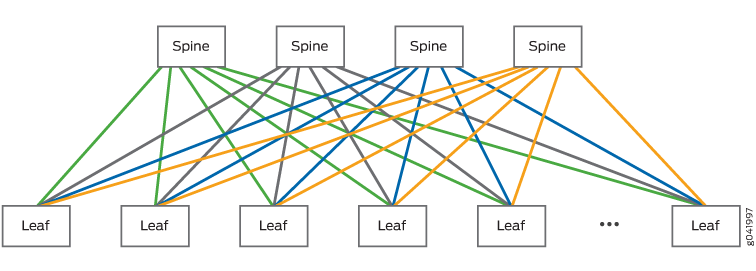Spine and Leaf Architecture, or The Bionic Network
Spine and Leaf Architecture, or The Bionic Network
I’m gonna save you the trouble. I made the mistake of watching The Six Million Dollar Man again recently, and with the exception of Lee Majors swaggering out in a red jumpsuit to do some (ultimately failed) astronauting, the show is garbage in a tire fire buried in the ashes of lost childhood. It’s just . . . not good. I clearly remember that show’s magnificence, but now? Hammy acting, silly plots, and Bigfoot? Fembots? Mine was the kind of false nostalgia that can really cripple your memory—and your network.
In planning a deployment, I was taught the Networking Big Three: Core, Distribution, and Access. I know, it was a while ago, but once that’s drilled into you like a silicon chip superpower, it sticks. It’s how you make everything work, and any deviation means Oscar Goldman calls you into his office to gouge out your bionic eye. It was THE WAY THINGS ARE DONE.
But I’m here to tell you there’s a better way. With Spine and Leaf Architecture, you can chop down the spanning tree and rebuild a lightning fast network, collapsing that three-tier network for good. Here’s the idea:
Used to be you’d have those three layers mentioned above, each connected via Layer 2 and controlled by the spanning tree, requiring redundant links that were basically useless until a topology change. Once the primary link went down, the redundant link would come alive like a robonaut, quick and reliable. But in the meantime, that redundant link? Useless as a grounded space capsule.
With Spine and Leaf Architecture, you take a chipper to the spanning tree and mulch the Distribution Layer, using Layer 3 routing to connect your Core Layer (Spine) to your Access Layer (Leaf, or Leaves), utilizing all the ports and bandwidth at your disposal. Gone is the dead wood of redundant links, replaced with each access leaf connected to each core vertebrae on the spine. Instead of relying on a complex spanning-tree protocol where mistakes in priorities can create long packet paths to their destinations, Layer 3 routing will update continuously, providing stability and speed, and with Equal-Cost-Multipathing, all your links are alive again, loop free, doing what they should’ve done all along. Adding servers, firewalls, edge routers? Just add an access leaf switch and you’re good to go. See that image up top?
If you’re ready to chop down that spanning tree and build a better, stronger, faster network, you’re going to have to make sure to remember a couple important issues. First, adding another leaf to the bionic tree is going to take planning, since each leaf is connected to every router in the spine, so plotting out the cabling and placement of a new switch will take a little time and effort. Second, individual VLANS will be limited to a specific leaf, so guest access and virtual machines won’t be as mobile as you might have had them in the past.
If you like the idea of simplifying and speeding up your network, we’d suggest the Juniper QFX10000 for your spine, and the QFX5100 for your leaves. Luckily, we’ve got those in stock right now.
The team at Terabit Systems specializes in providing quality refurbished networking equipment—as well as industry leading customer service— to clients worldwide. Email us or call +1 (415) 230-4353 to speak to a Terabit representative for a quote today.

